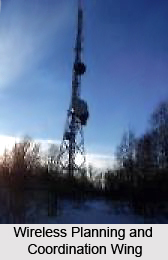 Wireless Planning and Coordination Wing or WPC was developed in 1952 and is associated with the Department of Telecommunications governed by the Ministry of Communications and Information Technology, Government of India. This organisation is actually the National Radio Regulatory Authority which has been entrusted the responsibility of regulating the frequency spectrum, allotting the spectrum and also issuing amateur radio licenses. The services of WPC are essential for the requirements of all wireless users of India including private and Government. The Wireless Planning and Coordination wing is known for releasing issues for controlling, establishing and also taking care of the wireless stations, and its official headquarters are located in Delhi. However, its local branches are existent in the Indian cities of Guwahati, Chennai, Kolkata and Mumbai.
Wireless Planning and Coordination Wing or WPC was developed in 1952 and is associated with the Department of Telecommunications governed by the Ministry of Communications and Information Technology, Government of India. This organisation is actually the National Radio Regulatory Authority which has been entrusted the responsibility of regulating the frequency spectrum, allotting the spectrum and also issuing amateur radio licenses. The services of WPC are essential for the requirements of all wireless users of India including private and Government. The Wireless Planning and Coordination wing is known for releasing issues for controlling, establishing and also taking care of the wireless stations, and its official headquarters are located in Delhi. However, its local branches are existent in the Indian cities of Guwahati, Chennai, Kolkata and Mumbai.
Standing Advisory Committee on Radio Frequency Allocation (SACFA), Licensing and Regulation (LR) and New Technology Group (NTG) are the various departments of the Wireless Planning and Coordination Wing. SACFA makes various kinds of recommendations on issues like creation of frequency allocation plan, important frequency allocation issues, subjects connected to the International Telecom Union (ITU) as well as to discover solutions on various complications addressed to the committee by numerous users of wireless technology and much more.
The Technical Group A officers connected to this body belongs to the cadre of the Indian Radio Regulatory Service. The highest officer is said to be the Wireless Adviser of India who is entitled to report to the Member (Technology) of Telecom Commission of India which falls under the Department of Communications.
This article is a stub. You can enrich by adding more information to it. Send your Write Up to content@indianetzone.com



















